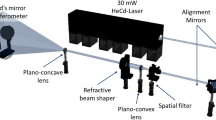Abstract
Inverse lithography technology (ILT) is one of the promising resolution enhancement techniques, as the advanced IC technology nodes still use the 193 nm light source. In ILT, optical proximity correction (OPC) is treated as an inverse imaging problem to find the optimal solution using a set of mathematical approaches. Among all the algorithms for ILT, the level-set-based ILT (LSB-ILT) is a feasible choice with good production in practice. However, the manufacturability of the optimized mask is one of the critical issues in ILT; that is, the topology of its result is usually too complicated to manufacture. We put forward a new algorithm with high pattern fidelity called regularized LSB-ILT implemented in partially coherent illumination (PCI), which has the advantage of reducing mask complexity by suppressing the isolated irregular holes and protrusions in the edges generated in the optimization process. A new regularization term named the Laplacian term is also proposed in the regularized LSB-ILT optimization process to further reduce mask complexity in contrast with the total variation (TV) term. Experimental results show that the new algorithm with the Laplacian term can reduce the complexity of mask by over 40% compared with the ordinary LSB-ILT.
Similar content being viewed by others
Reference
Cobb, N.B., Zakhor, A., 1995. Fast sparse aerial image calculation for OPC. SPIE, 2621:534–545. [doi:10.1117/12.228208]
Cobb, N.B., Zakhor, A., Miloslavsky, E.A., 1996. Mathematical and CAD framework for proximity correction. SPIE, 2726:208–222. [doi:10.1117/12.240907]
Granik, Y., 2004. Solving inverse problems of optical micro-lithography. SPIE, 5754:506. [doi:10.1117/12.600141]
Granik, Y., 2006. Fast pixel-based mask optimization for inverse lithography. J. Micro/Nanolith. MEMS MOEMS, 5(4):043002. [doi:10.1117/1.2399537]
Hopkins, H.H., 1953. On the diffraction theory of optical images. Proc. R. Soc. A, 217(1130):408–432. [doi:10.1098/rspa.1953.0071]
Jia, N.N., Lam, E.Y., 2010. Machine learning for inverse lithography: using stochastic gradient descent for robust photomask synthesis. J. Opt., 12(4):045601. [doi:10.1088/2040-8978/12/4/045601]
Jia, N.N., Wong, A.K., Lam, E.Y., 2009. Regularization of inverse photomask synthesis to enhance manufacturability. SPIE, 7520:75200E. [doi:10.1117/12.837512]
Li, Y.H., Shi, Z., Geng, Z., Yang, Y.W., Yan, X.L., 2012. A new algorithm of inverse lithography technology for mask complexity reduction. J. Semicond., 33(4):045009. [doi:10.1088/1674-4926/33/4/045009]
Lin, B., Yan, X.L., Shi, Z., Yang, Y.W., 2011. A sparse matrix model-based optical proximity correction algorithm with model-based mapping between segments and control sites. J. Zhejiang Univ.-Sci. C (Comput. & Electron.), 12(5): 436–442. [doi:10.1631/jzus.C1000219]
Ma, X., Arce, G.R., 2008. Binary mask optimization for inverse lithography with partially coherent illumination. J. Opt. Soc. Am. A, 25(12):2960–2970. [doi:10.1364/JOSAA. 25.002960]
Ma, X., Arce, G.R., 2010. Computational Lithography. Wiley Series in Pure and Applied Optics. Wiley & Sons, Hoboken, New Jersey, p.11. [doi:10.1002/9780470618 943]
Ma, X., Arce, G.R., 2011. Pixel-based OPC optimization based on conjugate gradient. Opt. Expr., 19(3):2165–2180. [doi:10.1364/OE.19.002165]
Ma, X., Li, Y.Q., 2011. Resolution enhancement optimization methods in optical lithography with improved manufacturability. J. Micro/Nanolith. MEMS MOEMS, 10(2): 023009. [doi:10.1117/1.3590252]
Ma, X., Li, Y.Q., Dong, L.S., 2012a. Mask optimization approaches in optical lithography based on a vector imaging model. J. Opt. Soc. Am. A, 29(7):1300–1312. [doi:10.1364/JOSAA.29.001300]
Ma, X., Li, Y.Q., Guo, X.J., Dong, L.S., Arce, G.R., 2012b. Vectorial mask optimization methods for robust optical lithography. J. Micro/Nanolith. MEMS MOEMS, 11(4): 043008. [doi:10.1117/1.JMM.11.4.043008]
Marquina, A., Osher, S., 2000. Explicit algorithms for a new time dependent model based on level set motion for nonlinear deblurring and noise removal. SIAM J. Sci. Comput., 22(2):387–405. [doi:10.1137/S1064827599351751]
Osher, S., Sethian, J.A., 1988. Fronts propagating with curvature-dependent speed: algorithms based on Hamilton-Jacobi formulations. J. Comput. Phys., 79(1):12–49. [doi:10.1016/0021-9991(88)90002-2]
Pang, L.Y., Dai, G., Cecil, T., Dam, T., Cui, Y., Hu, P., Chen, D., Baik, K., Peng, D., 2008. Validation of inverse lithography technology (ILT) and its adaptive SRAF at advanced technology nodes. SPIE, 6924:69240T. [doi:10.1117/12.775084]
Poonawala, A., Milanfar, P., 2007a. Mask design for optical microlithography—an inverse imaging problem. IEEE Trans. Image Process., 16(3):774–788. [doi:10.1109/TIP.2006.891332]
Poonawala, A., Milanfar, P., 2007b. A pixel-based regularization approach to inverse lithography. Microelectron. Eng., 84(12):2837–2852. [doi:10.1016/j.mee.2007.02.005]
Santosa, F., 1996. A level-set approach for inverse problems involving obstacles. ESAIM Control Optim. Calcul. Var., 1:17–33. [doi:10.1051/cocv:1996101]
Schellenberg, F.M., 2004. Resolution enhancement technology: the past, the present, and extensions for the future. SPIE, 5377. [doi:10.1117/12.548923]
Shen, S.H., Yu, P., Pan, D.Z., 2008. Enhanced DCT2-based inverse mask synthesis with initial SRAF insertion. SPIE, 7122:712241. [doi:10.1117/12.801409]
Shen, Y.J., Wong, N., Lam, E.Y., 2009. Level-set-based inverse lithography for photomask synthesis. Opt. Expr., 17(26): 23690–23701. [doi:10.1364/OE.17.023690]
Shen, Y.J., Wong, N., Lam, E.Y., 2010. Aberration-aware robust mask design with level-set-based inverse lithography. SPIE, 7748:77481U. [doi:10.1117/12.863973]
Wong, A.K.K., 2001. Resolution Enhancement Techniques in Optical Lithography. SPIE Press, Bellingham, Washington, USA, p.28. [doi:10.1117/3.401208]
Wong, B.P., Zach, F., Moroz, V., Mittal, A., Starr, G.W., Kahng, A., 2009. Nano-CMOS Design for Manufacturability Robust Circuit and Physical Design for Sub-65nm Technology Nodes. John Wiley & Sons, Inc., Hoboken, New Jersey, p.27.
Yu, J.C., Yu, P.C., 2010. Impacts of cost functions on inverse lithography patterning. Opt. Expr., 18(22):23331–23342. [doi:10.1364/OE.18.023331]
Yu, P., Pan, D.Z., 2007. TIP-OPC: a New Topological Invariant Paradigm for Pixel Based Optical Proximity Correction. Proc. IEEE/ACM Int. Conf. on Computer-Aided Design, p.847–853. [doi:10.1109/ICCAD.2007.4397370]
Author information
Authors and Affiliations
Corresponding author
Rights and permissions
About this article
Cite this article
Geng, Z., Shi, Z., Yan, Xl. et al. Regularized level-set-based inverse lithography algorithm for IC mask synthesis. J. Zhejiang Univ. - Sci. C 14, 799–807 (2013). https://doi.org/10.1631/jzus.C1300050
Received:
Accepted:
Published:
Issue Date:
DOI: https://doi.org/10.1631/jzus.C1300050



